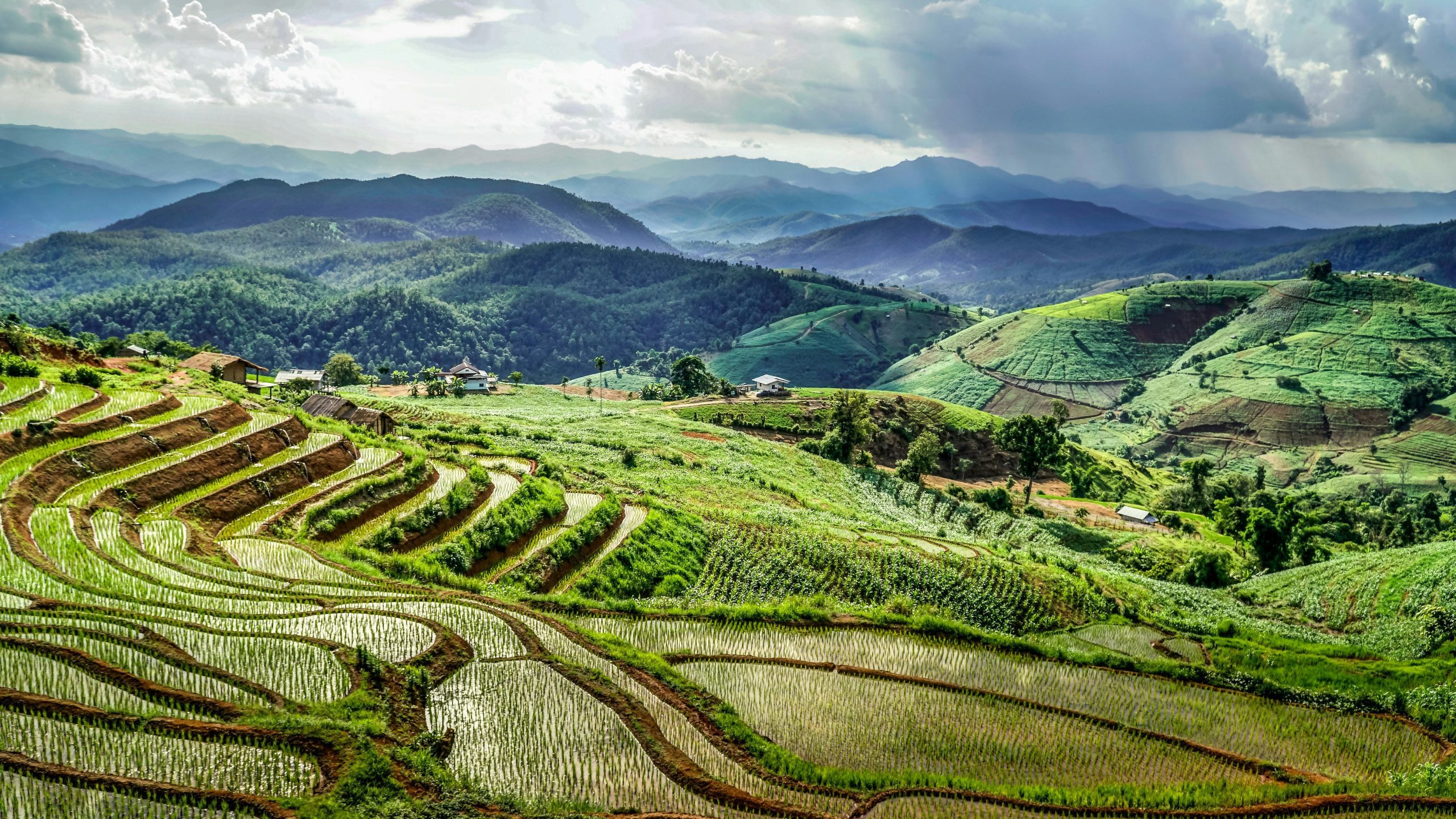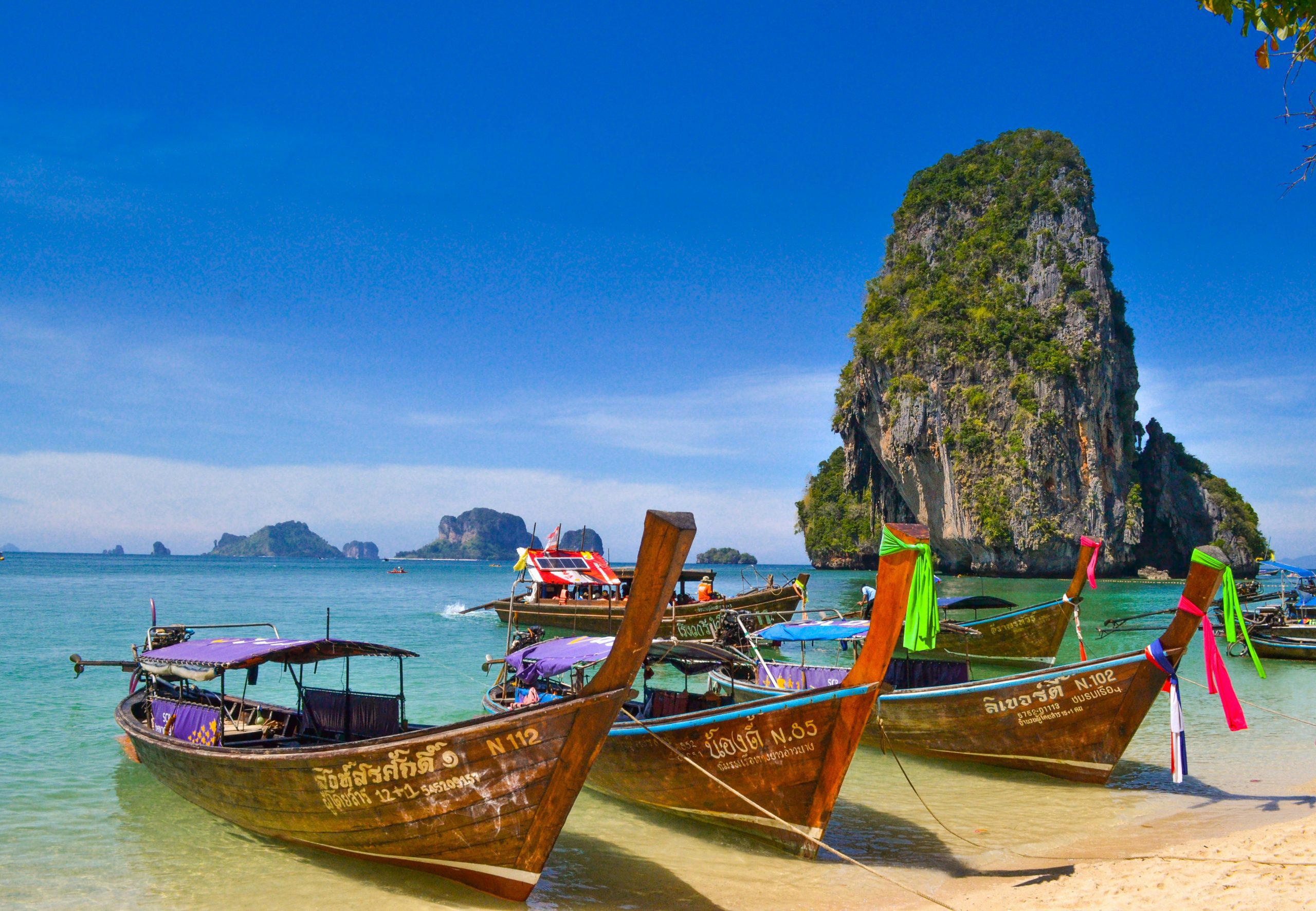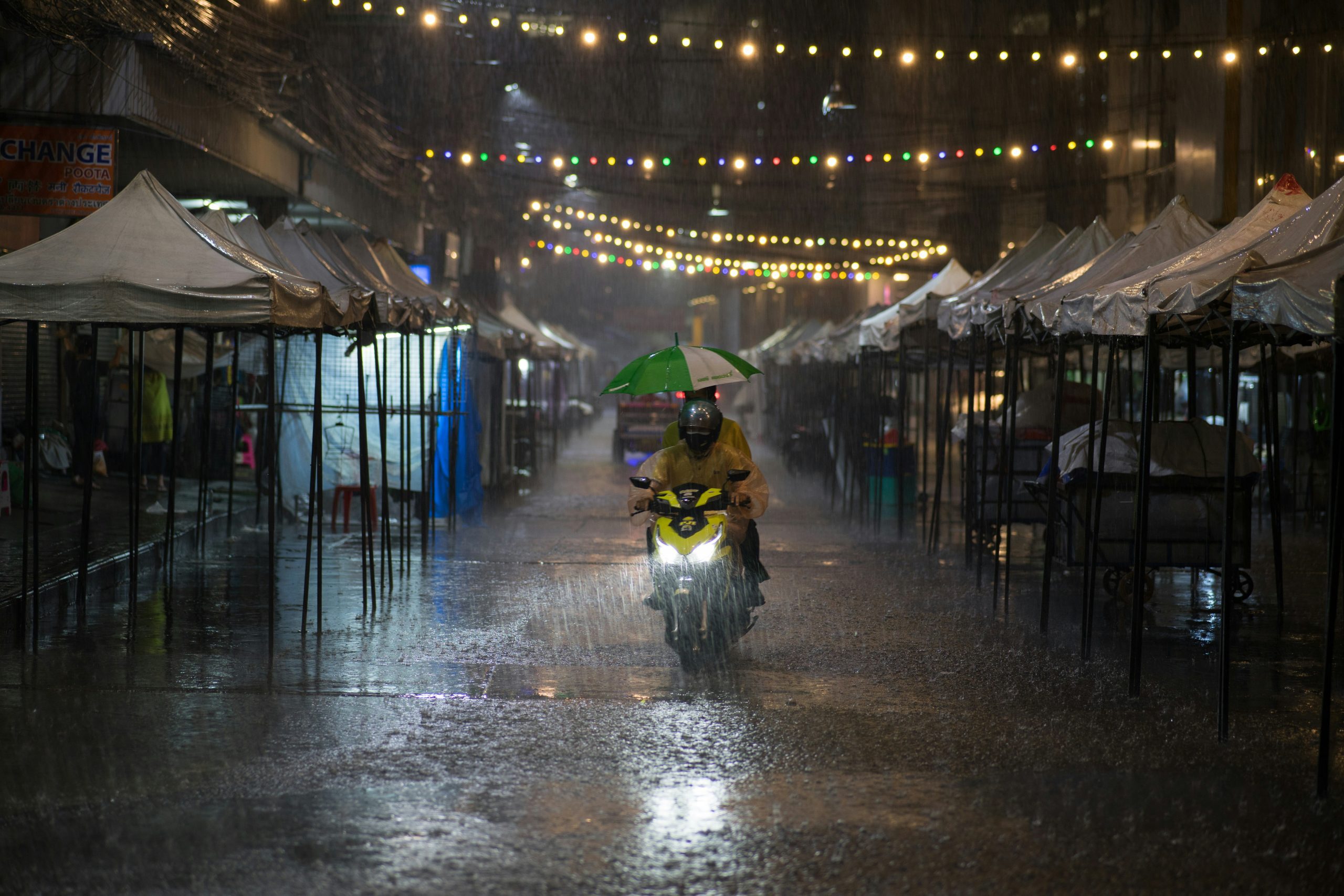Thailand doesn’t just have weather — it has moods. One month you’re sweating through Bangkok’s concrete jungle whilst the sun beats down mercilessly. The next, you’re watching monks collect alms in the cool morning mist of Chiang Mai. And somewhere in between, there’s a thunderstorm so dramatic it makes the whole country smell like fresh earth and frangipani.
Thailand’s climate is more like a personality you need to understand, with different regions experiencing distinct seasonal patterns. The trick isn’t finding the best time to visit Thailand but rather finding your perfect time based on weather, festivals, and activities that match what you’re actually seeking.

Understanding the Best Time to Visit Thailand
Thailand operates on three distinct moods, each lasting about four months and dramatically affecting how you’ll experience the country.
Cool/Dry Season (November–February): Thailand puts on its best behaviour during these months. This is when Thailand wants to impress you — and succeeds. Every photo looks like a postcard, and even the street food tastes better when you’re not melting.
- Pleasant temperatures between 20–30°C
- Low humidity levels making outdoor activities comfortable
- Minimal rainfall with clear, sunny skies
- Peak Thailand tourist season with crowds but guaranteed comfort
Hot Season (March–May): Thailand cranks up the intensity. This is when locals disappear into air-conditioned shopping centres, but it’s also when beaches empty out and Thailand throws its biggest party (Songkran).
- High heat with temperatures often exceeding 40°C in central regions
- Intense sun and rising humidity levels
- Fewer crowds and lower accommodation prices
- Songkran festival that brings incredible cultural experiences
Rainy/Monsoon Season (June–October): Travel to Thailand during these months if you want to experience the monsoon season. Rain arrives with sudden intensity and then leaves just as dramatically, leaving everything steaming and green. Most tourists flee, which is exactly why some travellers love this season.
- Frequent afternoon and evening showers with high humidity
- Lush, green landscapes and spectacular waterfalls
- Dramatically reduced tourist numbers and accommodation prices
- Authentic local experiences away from crowds
Important note: These seasons affect different parts of Thailand at varying intensities due to significant regional variations. The southern peninsula experiences opposite monsoon patterns, meaning somewhere in the country, it’s always a good time to visit.
Month-by-Month Guide to Visiting Thailand
If you’re limited in when you can travel to Thailand, it can be helpful to understand what each month actually feels like on the ground.
January in Thailand: Considered the best time to visit Thailand by many, with pleasant 22°C mornings and perfect 29°C afternoons. Humidity disappears, making it Instagram paradise, though everyone else figured this out too.
February in Thailand: Extends January’s magic with slightly rising temperatures. Chiang Mai Flower Festival blooms early in the month, but heat starts building by the end of February.
March in Thailand: Thailand gets serious about heat, hitting 33°C regularly. Northern Thailand can be unbearably hot, but beaches stay gorgeous with thinning crowds.
April in Thailand: Thailand’s hottest month when locals joke about cooking eggs on the pavement. Temperatures exceed 35°C, but the Songkran water festival makes the heat bearable.
May in Thailand: First monsoon clouds gather, though temperatures stay high. Smart travellers head to the Gulf coast where the weather remains beautiful.
June in Thailand: Monsoon season transforms Thailand completely. Temperatures drop to 28–32°C with intense 1- to 2-hour downpours followed by sunshine.
July in Thailand: Full monsoon season with near-daily afternoon rain. Tourist numbers plummet, revealing authentic Thailand with dramatic green landscapes.
August in Thailand: Wettest month but a photographer’s dream with impossibly green scenery. Accommodation prices drop 50% or more for budget travellers.
September in Thailand: Wet season continues with the entire country painted in saturated colours. Rain becomes part of the daily rhythm.
October in Thailand: Thailand’s redemption month as rain backs off. Smart travellers arrive after the worst rains but before the crowds return.
November in Thailand: Thailand remembers perfection again. Rain stops, humidity drops, temperatures settle perfectly. The magical Loy Krathong festival also happens this month.
December in Thailand: Peak season returns with flawless weather — warm days, cool evenings, minimal humidity. Enjoy Christmas in paradise with peak crowds and prices.
Thailand’s Regions and the Best Time to Visit Each
Weather varies dramatically across regions, so the best time to visit Thailand depends on exactly where you’re going.
Northern Thailand
The mountains change everything. Chiang Mai and northern Thailand actually get cold in winter — December and January mornings can dip to 15°C, which feels positively chilly after tropical heat.

November to February becomes hiking season with perfect temperatures to travel to Thailand for trekking and temple visits (18–28°C). But March and April turn brutal with not just heat, but smoky air from agricultural burning that makes air quality dangerous. The monsoon (June–October) brings relief from heat but also treacherous mountain roads, though waterfalls become spectacular.
Central Thailand
Bangkok and central Thailand experience climate extremes. Hot season here is punishing (40°C isn’t unusual), and the concrete amplifies everything. But cool season (November–February) transforms Bangkok into an actually pleasant city where you can walk without melting.
Monsoon season brings regular Bangkok flooding but also dramatic thunderstorms that make the city atmospheric in a uniquely beautiful way.
Southern Thailand — Gulf Coast
Whilst the west coast gets hammered by monsoons from May to October, the Gulf coast (Koh Samui, Koh Phangan, Koh Tao) stays relatively dry.
January to August offers nearly guaranteed sunshine, with February to April bringing perfect beach weather and calm seas. But September to December brings the northeast monsoon with rain and choppy seas.
Southern Thailand — Andaman Coast
Phuket, Krabi, and the Andaman coast operate on opposite seasonal logic. November to April brings perfect beach weather — this is the best time to visit with calm seas and minimal rain.
May to October brings the southwest monsoon with tropical downpours lasting hours. Ferry services reduce, and some islands become inaccessible. But you’ll see the west coast at its most dramatic and green.

Let our expert team craft your perfect Thai adventure:
- Fully customised itineraries tailored to your interests and travel style
- Local expertise ensuring authentic experiences beyond tourist hotspots
- Seamless logistics handling transportation, accommodation, and bookings
- 24/7 support providing peace of mind throughout your journey
When to Visit Thailand Based on Your Travel Style
Beach Lovers
If you live for perfect beach days, you need to understand the best time to visit Thailand’s coastlines.
- Optimal months: November to April for west coast (Krabi, Phuket best time to visit); January to August for Gulf coast (Koh Samui)
- What to avoid: May to October on west coast; September to December on Gulf coast
- Pro tip: Beach-hop between coasts following seasonal patterns

Cultural Enthusiasts
Temple hopping in 40°C heat is more endurance testing than cultural immersion, but you may want to time your travels around one of the major festivals.
- Optimal months: November to February for comfortable temple visits and city exploration
- What to avoid: March to May when extreme heat makes outdoor sightseeing miserable
- Festival highlights: Loy Krathong (November), Songkran (April), Chinese New Year (January/February)
Adventure Seekers
Monsoon season gets a bad rap from adventure travellers, but it actually offers some of Thailand’s most spectacular experiences.
- Optimal months: November to February for trekking and rock climbing
- What to avoid: March to May when heat becomes dangerous for strenuous activities
- Wet season adventures: June to August for spectacular waterfalls and lush jungle trekking
Budget Travellers
Monsoon season can be the best time to visit Thailand for those on a budget, saving you serious money whilst still offering incredible experiences.
- Optimal months: May to October when accommodation drops 50–70%
- What to avoid: December to February when Thailand peak season pricing kicks in
- Sweet spot: May and October (transitional weather, pre-peak pricing)
Families with Children
Travelling with kids in 40°C heat whilst dodging thunderstorms isn’t family fun, so time your trip carefully.
- Optimal months: December to February for predictable, comfortable conditions
- What to avoid: March to May (dangerous heat); peak monsoon with young children
- Smart move: Book accommodation with pools and indoor backup activities
Top Festivals and the Best Time to Experience Them
Thailand’s festivals are absolutely worth timing your trip around, but be prepared for crowds and prices that can triple overnight.
Loy Krathong (November) is pure magic when thousands of decorative rafts float down rivers whilst candles flicker across the water. This coincides with perfect weather, making November possibly Thailand’s most beautiful month. The catch? This festival can dramatically increase hotel prices, so book accommodation months ahead.
Songkran (April 13–15) happens during Thailand’s hottest month, which is actually perfect timing. The entire country erupts into a water fight that’s part cooling relief, part spiritual cleansing, part massive party. You’ll be soaked, overheated, probably sunburned, and have stories you’ll tell for decades.

Yi Peng (November) in Chiang Mai creates one of the world’s most Instagram-worthy moments with the release of thousands of paper lanterns. It often coincides with Loy Krathong, creating Thailand’s most magical but crowded week.

Chinese New Year (January/February) turns Bangkok’s Chinatown into a sensory explosion with dragon parades and fireworks. Dates vary annually, but expect tourist surges during this period.
Planning around festivals means booking well in advance and budgeting for higher costs, but experiencing Thailand’s cultural celebrations creates memories that last a lifetime. Just expect crowded transport and fully booked accommodation during these peak periods.
Travelling Thailand During the Rainy Season
Most travellers avoid Thailand’s monsoon season like the plague. They’re missing out on a completely different country that’s more authentic, dramatically beautiful, and surprisingly accessible.

During monsoon season, rain arrives like a dramatic performance, turning the sky dark, unleashing torrential downpours for 1–2 hours, then disappearing to reveal fresh-washed sunshine and clean air. The landscape transforms into something impossibly green, with thundering waterfalls and national parks at their most spectacular.
Tourism numbers plummet during rainy season travel, which means you can experience a more authentic side of Thailand. Restaurants become less busy, popular temples become peaceful again, and accommodation prices drop dramatically — sometimes 60% or more. The Thailand tourist season crowds vanish, leaving you with a country that feels yours to discover.
Successful rainy season travel requires flexibility and the right mindset. Pack quick-dry clothes, waterproof shoes, and a positive attitude. Plan indoor alternatives for afternoon downpours, and choose accommodation with covered walkways. The eastern Gulf coast generally experiences milder monsoon conditions, making places like Koh Samui viable even during peak rainy months.
Final Thoughts
There’s no best time to visit Thailand for every situation. But the November–February sweet spot exists for good reason, delivering reliable weather, comfortable conditions, and hassle-free travel that is sure to match your picture-perfect expectations.
Thailand’s other seasons are attractive for different reasons. The hot months bring festivals, fewer crowds, and even more spectacular sunsets. Travel to Thailand during the rainy months to reveal a lusher, more authentic Thailand where you’ll connect with the country rather than just photograph it.
Your perfect Thailand timing depends on what matters most to you. Want guaranteed sunshine and comfortable temperatures? Stick to November–February. Seeking adventure and don’t mind getting caught in the rain? The monsoon months offer incredible experiences at half the price. Love festivals and cultural experiences? Visit Thailand in November or April despite the crowds. Thailand’s beauty is that there’s never really a wrong time to go — just different experiences waiting to be discovered.



